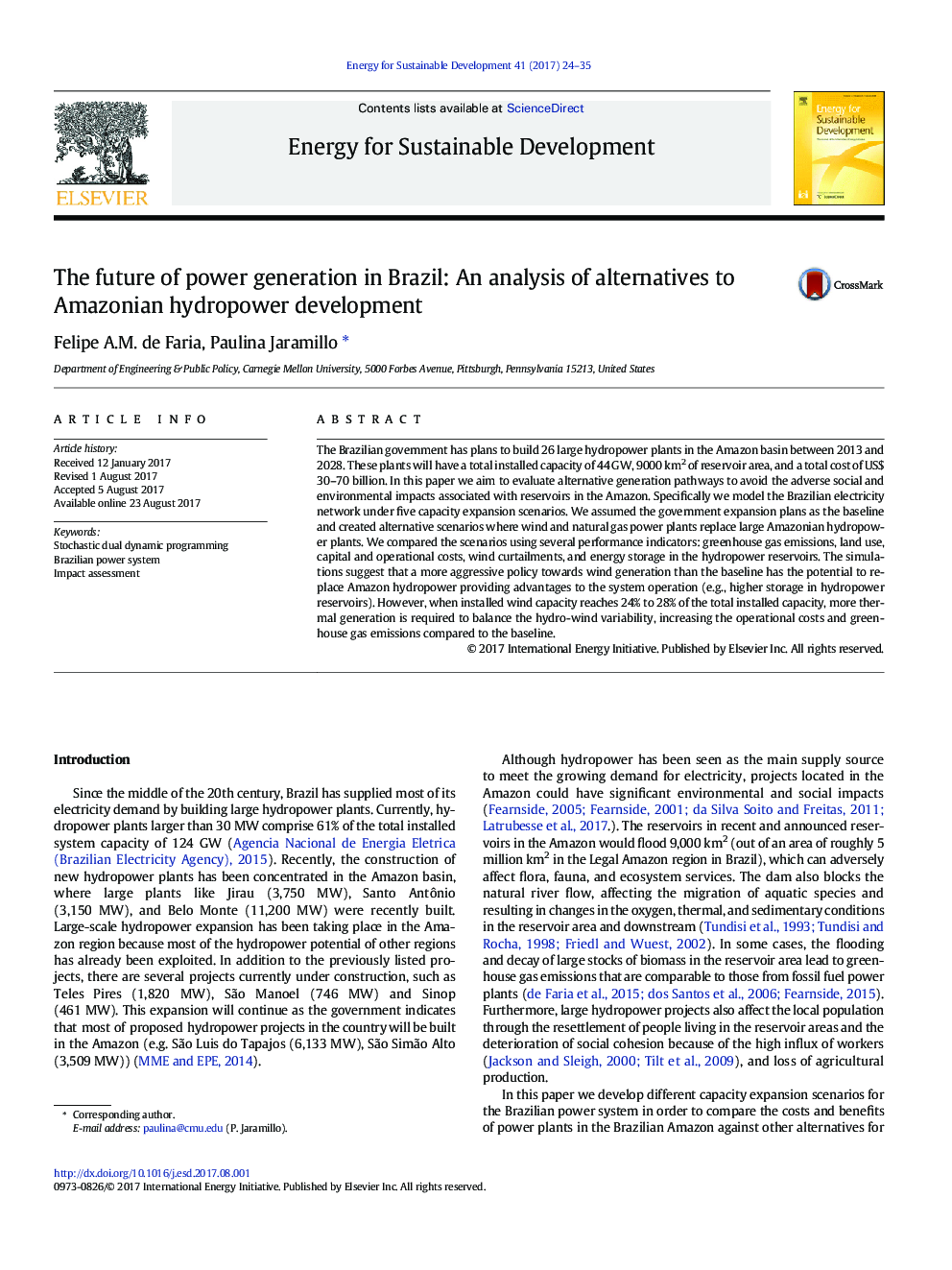| Article ID | Journal | Published Year | Pages | File Type |
|---|---|---|---|---|
| 5114297 | Energy for Sustainable Development | 2017 | 12 Pages |
Abstract
The Brazilian government has plans to build 26 large hydropower plants in the Amazon basin between 2013 and 2028. These plants will have a total installed capacity of 44Â GW, 9000Â km2 of reservoir area, and a total cost of US$ 30-70 billion. In this paper we aim to evaluate alternative generation pathways to avoid the adverse social and environmental impacts associated with reservoirs in the Amazon. Specifically we model the Brazilian electricity network under five capacity expansion scenarios. We assumed the government expansion plans as the baseline and created alternative scenarios where wind and natural gas power plants replace large Amazonian hydropower plants. We compared the scenarios using several performance indicators: greenhouse gas emissions, land use, capital and operational costs, wind curtailments, and energy storage in the hydropower reservoirs. The simulations suggest that a more aggressive policy towards wind generation than the baseline has the potential to replace Amazon hydropower providing advantages to the system operation (e.g., higher storage in hydropower reservoirs). However, when installed wind capacity reaches 24% to 28% of the total installed capacity, more thermal generation is required to balance the hydro-wind variability, increasing the operational costs and greenhouse gas emissions compared to the baseline.
Related Topics
Physical Sciences and Engineering
Energy
Energy (General)
Authors
Felipe A.M. de Faria, Paulina Jaramillo,
